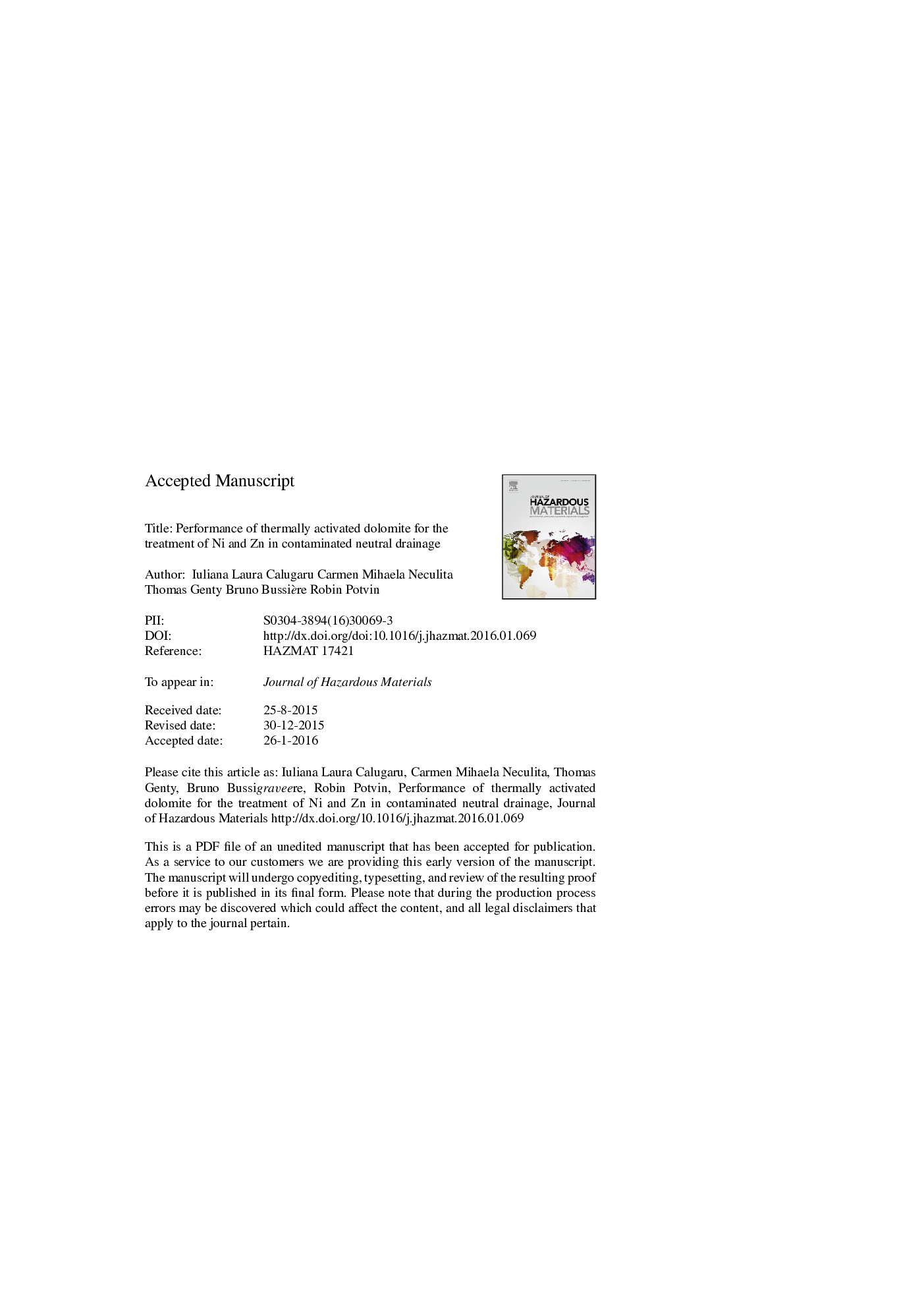| Article ID | Journal | Published Year | Pages | File Type |
|---|---|---|---|---|
| 575279 | Journal of Hazardous Materials | 2016 | 32 Pages |
Abstract
Intensive research is ongoing for developing low-cost and highly efficient materials in metal removal from contaminated effluents. The present study evaluated dolomite [CaMg(CO3)2], both raw and modified by thermal activation (charring), for Ni and Zn treatment in contaminated neutral drainage (CND). Batch adsorption testing (equilibrium and kinetics) were conducted at pH 6, to evaluate the performance of initial vs. modified dolomite, and to assess potential mechanisms of metal removal. Charring of dolomite led to a rigid and porous material, mainly consisting of CaCO3 and MgO, which showed a sorption capacity increased sevenfold for Zn and doubled for Ni, relative to the raw material. In addition, Freundlich model best described the sorption of the both metals by dolomite, whereas the Langmuir model best described their sorption on charred dolomite. Plausible mechanisms of metal removal include cation exchange, surface precipitation and sorption processes, with carbonate ions and magnesium oxides acting as active centers. Based on these results, charred dolomite seems a promising option for the efficient treatment of Ni and Zn in CND.
Keywords
Related Topics
Physical Sciences and Engineering
Chemical Engineering
Chemical Health and Safety
Authors
Iuliana Laura Calugaru, Carmen Mihaela Neculita, Thomas Genty, Bruno Bussière, Robin Potvin,
